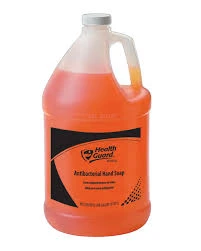use of poly aluminium chloride in water treatment
The Use of Poly Aluminium Chloride in Water Treatment
Water treatment is an essential process in ensuring the quality of water for human consumption, industrial use, and ecological balance. As one of the most critical resources on the planet, clean and safe water is vital for health, sanitation, and agriculture. Various methods and chemicals are employed in water treatment, among which Poly Aluminium Chloride (PAC) has emerged as a prominent coagulant.
What is Poly Aluminium Chloride?
Poly Aluminium Chloride (PAC) is an inorganic polymer that consists of positively charged aluminium ions. It is synthesized by the reaction of aluminum hydroxide or aluminum oxide with hydrochloric acid, producing a solution with adjustable basicity. PAC is available in multiple forms, such as powder, solid, and liquid, making it versatile for different applications.
Importance of Coagulation in Water Treatment
Coagulation is a critical process in water treatment, as it helps in the removal of suspended particles, colloids, and impurities from the water. During coagulation, coagulants like PAC are added to the water, where they neutralize the positive and negative charges of the particles, allowing them to clump together and form larger aggregates known as flocs. This sedimentation process enables easier removal of contaminants through filtration and settling.
Advantages of Using PAC
1. Effective Removal of Impurities PAC is highly effective in removing a range of impurities, including turbidity, suspended solids, and heavy metals. Due to its high charge density, PAC can coagulate particles more effectively than traditional coagulants like aluminum sulfate, particularly in low alkaline water.
2. Improved Water Clarity Water treated with PAC typically exhibits lower turbidity levels, leading to clearer output. This is particularly beneficial for drinking water treatment, enhancing not only aesthetic qualities but also the perception of water safety.
3. Lower Dosage Requirement PAC generally requires a lower dosage compared to other coagulants, which makes it a cost-effective option. This lower dosage leads to reduced residual aluminum in treated water and less impact on downstream processes.
4. Enhanced Settling Properties The flocs formed using PAC tend to be denser and settle more rapidly than those produced with conventional coagulants. This characteristic enhances the efficiency of sedimentation tanks, reducing the overall treatment time.
use of poly aluminium chloride in water treatment

5. Wide pH Range Compatibility PAC can operate effectively across a broad pH range, making it suitable for various water types, including surface water and wastewater with varying alkaline conditions.
Applications of PAC in Water Treatment
PAC is widely used in municipal water treatment plants, industrial water treatment, and even in treatment processes for drinking water. Its versatility has led to its adoption in several treatment scenarios, including
- Drinking Water Treatment PAC is frequently used in the purification of drinking water, ensuring the removal of pathogens, organic matter, and pathogens, thus safeguarding public health.
- Wastewater Treatment In industrial wastewater treatment, PAC aids in removing contaminants that may pose environmental hazards if released untreated.
- Sludge Treatment PAC also plays a role in thickening and dewatering sludge, streamlining the overall waste management process.
Environmental Considerations
While PAC offers numerous benefits, it is crucial to consider the environmental implications associated with its use. Residual aluminum from any coagulant can pose risks to aquatic life and ecosystems. However, because PAC typically results in lower residual aluminum levels than traditional coagulants, it remains a preferable choice in many contexts.
Conclusion
In conclusion, Poly Aluminium Chloride has carved out a significant niche in water treatment technologies, offering effective solutions for the removal of impurities while being cost-effective and environmentally considerate. As water quality standards continue to evolve, the role of PAC in ensuring safe and clean water will likely remain steadfast, paving the way for advancements in water treatment practices universally. The ongoing research and development will further elucidate its benefits and safety, ensuring that water treatment processes continue to protect both public health and the environment.
-
Water Treatment with Flocculant Water TreatmentNewsJun.12,2025
-
Polymaleic AnhydrideNewsJun.12,2025
-
Polyaspartic AcidNewsJun.12,2025
-
Enhance Industrial Processes with IsothiazolinonesNewsJun.12,2025
-
Enhance Industrial Processes with PBTCA SolutionsNewsJun.12,2025
-
Dodecyldimethylbenzylammonium Chloride SolutionsNewsJun.12,2025





